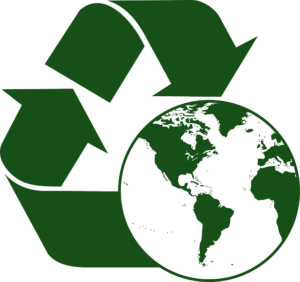How to Handle Data When Recycling Electronics
Throughout service, electronics acquire quite a bit of data about their owners. They have passwords, photos, search histories, and more stored in their memories. Unfortunately, unsavory people would use all this data once the device leaves its owner for a recycling operation or landfill. Recycling electronics shouldn’t carry this risk though, and there are steps to prevent it.
 Image from Pixabay
Image from PixabayDevice Wipe
The modern digital device has a few data safety features. One of these is a device wipe or factory reset option. Upon activating this option, the device returns to its factory default. This means all the data is scrambled, not deleted though. This is a hazard when recycling electronics.
With a factory reset, all the information is still there, but the addresses telling the device where to look are removed. There is software available that takes this address-less data and figure out what went where. This means whoever ends up with the device could access anything from contacts to pictures if they have less than pure intentions.
Hard Drive Removal
Devices, particularly computers, are all about expandable memory. These expansions are removable, and on larger devices like computers, the whole memory is too. In the event the memory is accessible, the owner can pull it out before disposal.
With this method, the device owner keeps control of the data. However, the data owner must store their data responsibly to avoid theft later. It’s also possible to lose data over time or misplace how to access it. However, holding onto ownership is a fantastic way to ensure privacy when recycling electronics.
Hard Drive Destruction
One of the best ways to maintain data privacy is to destroy the memory of devices prior to recycling electronics. This destruction of memory and hard drives is a physical task, and then the pieces need disposal separately. Without this separation, at some point in the future parts might become accessible.
Hard drive destruction annihilates the data. Brute force can theoretically carry out the goal, but it makes recycling the device harder. Instead, there are machines designed to destroy hard drives.
A respectable recycler will allow the previous owner to watch the destruction or supply written guarantee it will happen.
Responsible Recyclers
There are a lot of electronics recycling options available, both in person and on the web. Each of them offers a similar service, taking old electronic devices like computers and repurposing the elements in the components. However, some companies are more scrupulous than others.
Companies who choose to become certified through the R2 or e-Stewards programs receive regular audits. They follow rigorous standards for recycling, customer service, and safe working conditions. Since they maintain these certifications, their data handling is also codified.
While there are several options for handling data when it comes to recycling electronics, the top method is to stay vigilant. Some folks love to get their hands-on strangers’ data, and they can dramatically upset lives. Take some time, do some research, and choose the methods of data handling that work in a specific scenario.
How to properly recycle your old laptop
The majority of today's global population owns either a smartphone, laptop, game console, or several other gadgets. Every electronic device has a limited life span, thanks to continuous technology and IT development. Most of these gadgets become outdated in five years and some in ten years max. When this happens, they become e-waste and should be appropriately disposed of.
 Image from Pixabay
Image from PixabayIn 2016, it was discovered that in a United Nations study that 44.7 million e-wastes were disposed, but only 20 percent of this waste was disposed correctly. This statistic alone shows the dangerous amount of unrecycled e-waste improperly disposed into the environment each year.
The safest thing to do when you want to get rid of your old laptop or electronic gadget is to recycle it. Before doing that, there are a few important things you must do to ensure all your personal information is secured.
Things to do before recycling your old laptop
Back-up all your information
Getting a new laptop doesn’t mean you have to lose your important files. Ensure you save all your relevant documents and files in an external hard drive or the cloud.
Reset the system’s factory setting
After backing up your important files and documents, restore the factory setting of your laptop to clear all traces of your personal information. Doing this will keep all your data secured from any third-party access.
Data-shredding
Data can still be restored by a recycling company even after a factory reset is done. It is advisable to use data-shredding software to permanently and securely get rid of all your data.
Removing your hard drive
To skip all these processes, you can remove your hard disk. This saves you the stress of backing up your files and going through the previous steps.
Steps to take to recycle your laptop properly
Usually, retailers are obliged to help you dispose of your old electronics for free when you purchase a new product or offer an alternative recycling option for you. In case you aren’t able to get it disposed of this way, here are a few good ways to ensure your outdated device is being properly recycled.
Take it to a local recycler
Numerous nonprofit local organizations will help you recycle your old laptop for free. You can search the internet to find the nearest local recycler in your area.
Donate it
You can also donate your old laptop and other gadgets to a charity organization who refurbish these devices and send it to developing countries. Ensure you get a receipt for this so you can deduct it from your next tax return.
Examples of such charities include; Dell reconnect (they accept all laptop brands, including computer accessories) and Americancellphonedrive.org (they take all mobile phones, refurbish and resell them).
Take it to a tech company
To give you full assurance that your device will be properly recycled, you can take it to a tech manufacturer or retail company. Many tech manufacturers offer recycling plans to the public. These plans are usually a means to compensate the user and also recycle old electronics. Check your product’s company website to see if such plans are available.
Properly disposing your gadgets is important in order to prevent e-waste pollution. Keep your environment clean and safe today by putting away your outdated devices the right way.
The Environmental Cost of Computers
These days, we’ve become accustomed to replacing technology rather than repairing it. However, this disposability in electronics comes at a cost. Without proper laptop recycling, all the materials that went into producing the computers we use daily end up causing further pollution.
We need to be aware of the environmental cost of computers now more than ever, especially given how many vital functions are going digital. Without our electronics, we have a challenging time functioning. However, that doesn’t mean we shouldn’t be aware of what goes into our computers.
 Image from Pixabay
Image from PixabayProduction
Computers require an extraordinary number of elements for their construction. To meet the demand, mining for these elements often occurs in unregulated environments. Compounding the environmental cost of computers, turning these raw minerals into usable circuitry frequently occurs in unsafe conditions. Even 15 years ago, the United Nations was concerned about the practices for making computers. Since then, technology became more complex and more replaceable. The manufacturing costs alone have kept increasing. Each machine requires about ten times its weight in materials, not counting the water and carbon emissions.
Shipping
Since many manufacturers search for the cheapest components they can find, they’re often sourced from across the world. Then they’re gathered in a factory, typically outside of the country where they’re eventually sold. When they’re finally assembled, the computers ship to their final destinations. All of this adds up to tremendous emission numbers, not to mention other resources. A sizable portion of the environmental cost of computers is in carbon emissions. Before the piece of technology even hits shelves it’s traveled thousands of miles.
In Use
Even while we the consumers have computers; they can be tied to other environmental consequences. As consumers, we tend to choose convenience. All these little things add more to the environmental cost of computers. Depending on how our communities get their electricity, this added cost can compound very quickly over the life of our devices.
Disposal
Unfortunately, companies have been moving more towards a planned obsolescence model. That means that we are being herded into buying new laptops and other electronic gadgets, even if the only thing wrong with our old one is the software. The problem though is what we do with our The Environmental Cost of Computers.
Electronic waste cannot go to landfills. Not only does it have an exceedingly long decomposition time, but electronic waste tends to leak the toxic chemicals from its components. Things like lead and cobalt can poison soil and humans alike when it comes into contact with them. The responsible course is to sell laptops and electronics to a recycler. Electronics recyclers take the devices we don’t want and separate out the different components. The toxic elements are safely disposed of, while the rarer elements are put into new uses. When we choose to recycle our electronics, we’re doing a little to offset the environmental cost of computers.